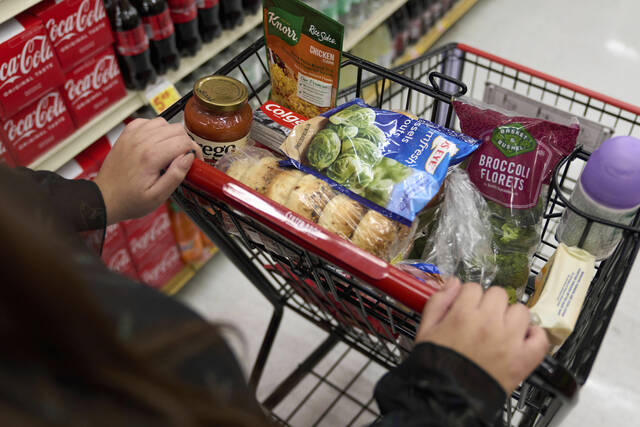Commentary: Food inflation is a hardship outside the Fed's control
It’s nearly impossible to have a conversation about inflation without mentioning food prices. And no wonder, as they are up 24% since the start of the pandemic and account for one-sixth of the increase in consumer prices overall. After the recent monetary policy meeting, Federal Reserve Chair Jerome Powell said the central bank is “aware that high inflation imposes significant hardship … especially for those least able to meet the higher costs of essentials like food, housing and transportation.”
When inflation rates are high, people look to the Fed to bring them back down. But the Fed, even with large increases in interest rates at its disposal, has relatively little influence over the price of necessities such as food because demand is primarily fixed. The remedy for food inflation is a sufficient and reliable supply.
Federal and state governments, as well as businesses, have the tools to shore up the food supply chain, not central bankers.
Rising food prices are straining low-income households. According to the Census Bureau, 27% of households with income under $35,000 report not having enough to eat in the past week.
Disruptions in the supply chain are primarily to blame for higher food prices. Some of the causes for the disruptions were novel to the pandemic, such as covid-19 outbreaks leading to labor shortages and shutdowns at meat packing plants. Others were more common, like avian flu killing chickens and causing severe egg shortages.
Consumers saw the effects at the cash register, with the price of ground beef spiking by 20% early in the pandemic, and the price of eggs shooting up almost 150%. These increases mostly reversed, but the prices remain higher than four years ago.
The lesson here is that making food processing, like meat packing, more resilient to supply shocks would be a big step toward stabilizing food prices. According to the Department of Agriculture, processing is the largest contributor — 25 cents — to an average dollar in the retail price of food and almost twice the contribution from farm production — 14 cents.
The food processing industry is highly concentrated. The top 22 beef packing plants account for more than 70% of federally inspected cattle processing. In principle, the lack of redundancies makes the food supply and, thus, retail prices vulnerable to disruptions at these plants, as was proved during the pandemic.
Economists Meilin Ma and Layson Lusk at Purdue University examined whether less concentration would make the sector more resilient. They found that spreading meat processing across more plants would lead to stabler output and prices in the face of shutdown risks, but high concentration would lead to more output and lower prices, on average, due to the economies of scale in processing. Even so, a trade-off exists between resiliency and efficiency that antitrust regulation that forces less concentration can’t circumvent.
Another option is to increase capacity and the number of plants. One option is to expand the USDA’s Food Supply Chain Guaranteed Loan Program, part of the American Rescue Plan. The program supports capital investments for food processors to expand or start plant operations, allowing more processors to achieve economies of scale. The program extends to other parts of the food supply chain, including farming, food transportation, and fertilizer manufacturing, all to make the supply of food more resilient and prices more stable.
Looking to the Fed to keep food prices stable is a mistake, but neglecting the weaknesses in the food supply chain is an even bigger one.
Remove the ads from your TribLIVE reading experience but still support the journalists who create the content with TribLIVE Ad-Free.

